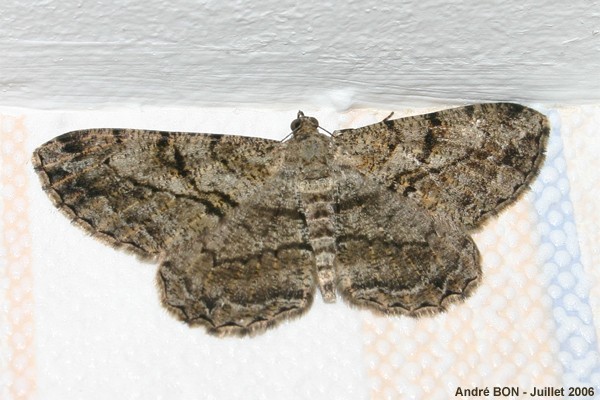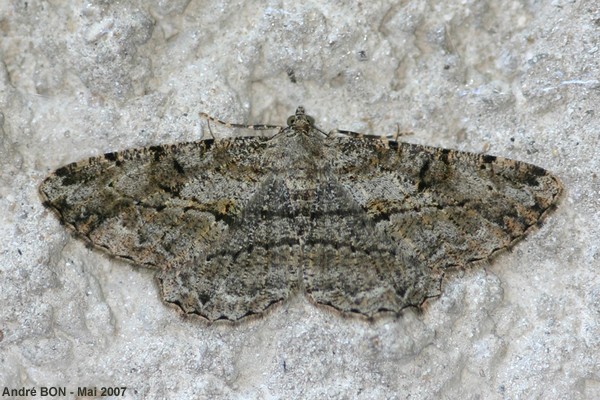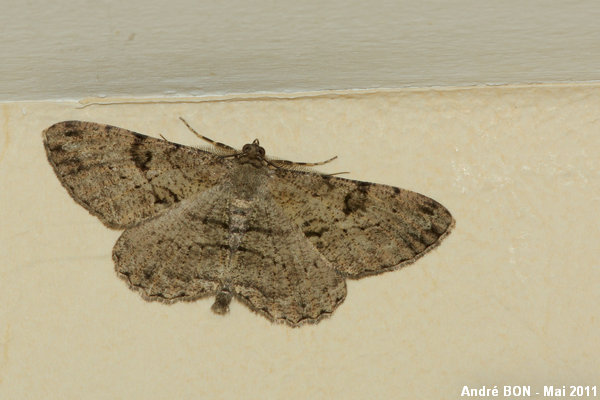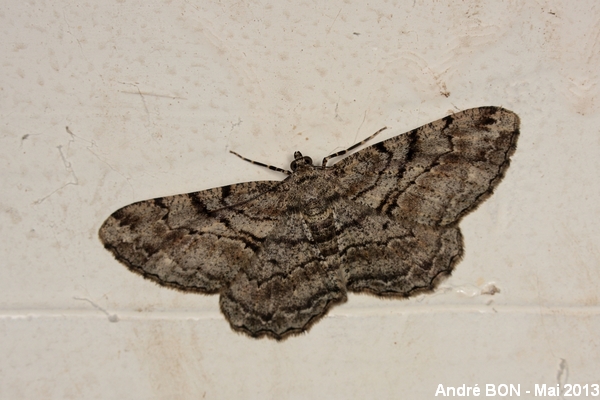



| Willow Beauty (Peribatodes rhomboidaria (Denis & Schiffermüller, 1775)) |




|
|
Scientific name: Peribatodes rhomboidaria (Denis & Schiffermüller, 1775) Common name: Willow Beauty French name: Boarmie rhomboïdale Order: Lepidoptera Suborder: Heterocera Family: Geometridae Subfamily: Ennominae Wingspan: 35-40 mm. Biotope: Hedgerows and woodlands. Geographic area: Europe, Near East and Northern Africa. Flight time: Late May to July, then August to October. Number of generations : 2 Caterpillar: Brown with a dark dorsal line on the three first and the three last segments. There is also a dark wavy line on each side. While resting it mimics a small piece of wood. Host plant: Vines, Ivy, Hawthorn, Birch, Privet, Lilac, Honeysuckle, Ash, Oak, etc. |
The Willow Beauty is grey-brownish. The fore wing shows 2 black-brownish cross lines which get closer or touch near the back edge. The hind wing shows several black-brownish wavy lines. The male has feathery antennae. The Willow Beauty over winters as a caterpillar. The second generation is more important. The caterpillars can cause damage by eating buds of vine. You can tell apart the Lydd Beauty (Peribatodes ilicaria), which is more a southern species but extending its range northwards, with the thin blackish line crossing the hind wings and parallel to the marginal edge The Feathered Beauty (Peribatodes secundaria) shows, on the fore wings, a black submarginal line which is almost straight near the costal edge. This line draws a S curve on the Willow Beauty. This is the opposite near the inner edge, that's to say straight on the Willow Beauty and S-curved on the Feathered Beauty. Furthermore male Feathered Beauty shows wide feathery antennae up to the tip. Male Willow Beauty has thinner antennae where the feathery part stops before the tip. The tip part is filiform. |
| [To know more about the Willow Beauty] [Next picture] [Top] |

|
An opened window, some light and the Willow Beauty has entered the house. |
| [To know more about the Willow Beauty] [Next picture] [Previous picture] [Top] |

|
I am used to observing, from time to time, some Willow Beauties landed on the wall of the house. This must be their hidden place to rest immobile during the day, without attracting predators (but there is sometimes one paparazzi). |
| [To know more about the Willow Beauty] [Next picture] [Previous picture] [Top] |

|
The feathery antennae indicate one male. |
| [To know more about the Willow Beauty] [Previous picture] [Top] |

|
The thread-like antennae indicate one female. |